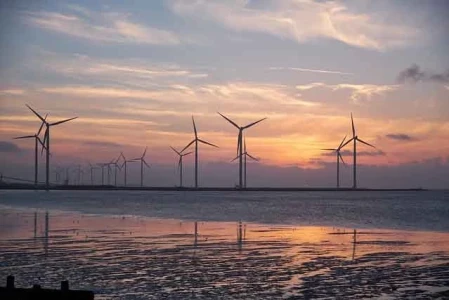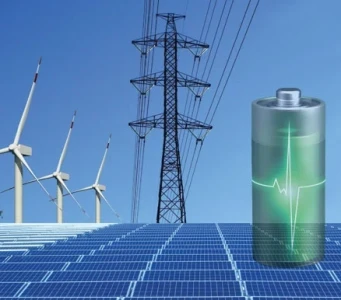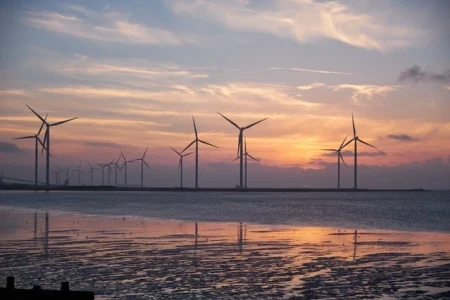Resin Innovation Paves the Way for Sustainable Wind Turbine Blade Recycling

The renewable energy sector is experiencing rapid advancements, particularly in wind energy, where new technologies are crucial for sustainability. A recent breakthrough from the National Renewable Energy Laboratory (NREL) highlights a promising development in the recycling of wind turbine blades: a new resin made from biomass that could revolutionize blade disposal and reduce environmental impacts.
Wind turbines, a cornerstone of the transition to clean energy, rely on large, fiberglass-reinforced composite blades that are highly efficient but pose significant challenges at the end of their life cycle. Traditional disposal methods for these blades often involve landfilling or incineration, both of which have environmental drawbacks. As the wind industry continues to expand, the need for effective recycling solutions becomes increasingly urgent.
The NREL's research introduces a novel resin derived from biomass, which offers several advantages over conventional materials. This new resin is not only sustainable but also significantly improves the recyclability of wind turbine blades. Here’s a closer look at the implications of this innovation.
The Problem with Traditional Blade Materials
Wind turbine blades are constructed from composite materials that combine fiberglass with epoxy resins. These materials are chosen for their strength, durability, and light weight, which are essential for the high-performance demands of wind turbines. However, once these blades reach the end of their operational life—typically after 20-25 years—they become problematic waste. The current methods for dealing with these blades are inefficient and environmentally taxing. They can either be sent to landfills, where they take up space and leach potentially harmful substances, or incinerated, releasing toxins into the atmosphere.
Biomass-Based Resin: A Game Changer
The innovative biomass-based resin developed by NREL offers a transformative approach to this problem. This resin is derived from renewable plant materials, making it a more sustainable option compared to petroleum-based resins. Its key advantage lies in its recyclability. Unlike traditional resins that are difficult to break down, the biomass-based resin can be more easily processed at the end of the blade's life. This allows for the recovery of valuable materials and reduces the need for disposal.
In practical terms, this means that wind turbine blades made with this new resin could be disassembled and repurposed more efficiently. The resin’s properties also support the creation of high-performance blades that do not compromise on durability or effectiveness.
Environmental and Economic Benefits
The environmental benefits of using biomass-based resin are considerable. By improving recyclability, the new resin reduces the volume of waste that ends up in landfills and minimizes the need for incineration. This aligns with broader goals of reducing carbon footprints and promoting circular economy practices within the renewable energy sector.
Economically, the adoption of this technology could drive down the costs associated with blade disposal and recycling. As the wind energy sector continues to grow, the scale of blade disposal challenges will increase. By integrating biomass-based resins into blade manufacturing, companies can potentially lower long-term costs related to waste management and compliance with environmental regulations.
Future Implications and Industry Adoption
The introduction of biomass-based resin represents a significant step forward in addressing one of the wind industry’s most pressing challenges. However, widespread adoption will depend on several factors, including the resin's cost-effectiveness compared to traditional materials and the willingness of manufacturers to embrace this innovation.
Continued research and development are essential to optimize the resin’s performance and lower production costs. Collaboration between research institutions, manufacturers, and policymakers will be crucial to facilitate this transition. As the technology matures, it could become a standard in blade production, setting a precedent for other sectors to follow suit in adopting sustainable materials.
In conclusion, the NREL's advancement in biomass-based resin for wind turbine blades is a promising development for the renewable energy industry. It addresses a critical environmental challenge while supporting the continued growth of wind energy. By embracing such innovations, the industry can move closer to a sustainable future, where renewable energy technologies are both effective and environmentally responsible.









